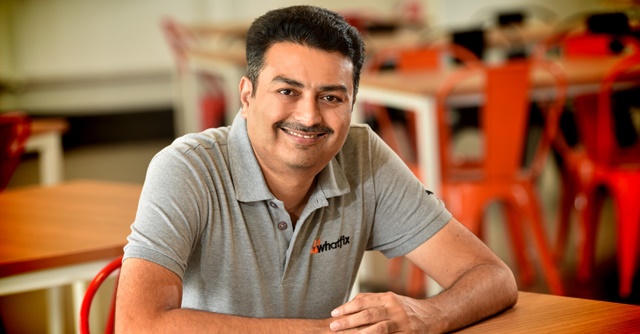
Co-Own, Co-Win: CIOs, CXOs drive user adoption


In 2024, Indian companies are significantly increasing their IT spending to keep pace with rapid digital transformation and intensifying market competition. By 2023, India had 821 million digital audiences against 759 million in the previous year. As consumers shift from offline to online platforms—a trend underscored by notable increases in online engagement over recent years—businesses are compelled to evolve digitally to meet customer needs across various channels. This shift is not just about maintaining relevance but also about leading innovation and productivity to stay ahead. Consequently, technology investments are critical to empower companies to enhance operational efficiencies and employees' and customers' digital experiences.
The record pace of enterprise technology innovation offers unprecedented opportunities to drive efficiency, but it also presents complex challenges to ensure proper use and adoption. In fact, according to a Whatfix Digital Adoption Trends report, 84% of employees struggle to use core software features and workflows in their daily tasks. According to a survey conducted by TCS, only 25% of global respondents could claim to have end-to-end digital customer experience capabilities in place, and only 24% had an installed artificial intelligence analytics capability to improve it.
The low adoption rate highlights the critical need for a shared agenda between CIOs and other corporate leaders to increase the value of investments in technology. This is especially true as the pace of innovation accelerates and organizations are forced to navigate budgetary pressures and growing skills shortfalls. Gartner states that 45 % of CIOs are beginning to work with their CXO peers to bring IT and business area staff together to co-lead digital delivery on an enterprise-wide scale. Another report from Gartner also found that CIOs who co-lead and resource digital delivery with other CXOs are more than twice as likely to meet or exceed the outcomes from their digital technology investments.

As the role and responsibilities of the CIO have transformed, they face increasing pressures to spearhead digital adoption initiatives across their organizations. This is driven by the ever-changing market landscape and the growing criticality of technology investments to sustain competitive advantages.
Why Employee-Centric Approaches are Pivotal Digital adoption begins with the employee experience, and companies are challenged to create the technology and processes around the challenges of the end user. CIOs and technology leaders need to understand employee challenges and disconnects and the technologies that can address them.
The user experience is often unintuitive, and many employees struggle to find the most straightforward paths to software adoption. As a result, more companies are recognizing the need to roll out new technologies, such as digital adoption platforms (DAPs), and processes to address these challenges for end users. This effort should increase at the same pace as technology adoption itself to ensure that tech investments can drive the desired ROI.

This user-centric approach to solving end-user challenges has become more mainstream. Many of the most popular enterprise applications on the market today are often misunderstood, and the employee base almost always underutilize them. As a result, more CIOs and CXO partners are combining project management software with DAPs to improve their user support for collaboration and adoption.
Enabling User Sufficiency with DAP
Building a CIO-CXO partnership takes time and money, but the advantages of nurturing inclusion for actual IT business users can make up for the costs. Business leaders and IT teams should agree on how to delegate authority to manage technology proficiency within each business unit and what budget resources and human resources should be committed to complete each project. Part of the process for digital adoption is encouraging self-support for users to solve their problems without help from IT. This self-support approach feeds into the larger concept of shared responsibility between CIOs and CXOs.

Here’s where technology can help. Enterprises can use DAPs for customer relationship management (CRM) enablement, for example, to train new salespeople with contextual guidance embedded into their CRM applications. They should also consider creating “tool tips” that include video snippets of real-life sales conversations for a multimedia learning approach.
They can also integrate DAPs into a human capital management (HCM) app to nudge employees with a pop-up notice above their email client. The pop-up would show a countdown reminder for their upcoming open enrollment benefits deadline. It would then prompt a contextually guided flow for users to complete their enrollment forms.
Collaboration for the Digital Wins

Overcoming digital hurdles requires cross-functional leadership. CIOs and CXOs collaborating fosters shared ownership and leverages combined expertise to navigate digital changes together for optimal outcomes.
CIOs should work with their CXO peers to co-create common metrics for measuring user engagement, not just project outcomes. Some quantifiable metrics to improve digital delivery include the number of IT-related support tickets for enterprise applications such as CRM, enterprise resource planning (ERP) or HCM and the related costs to resolve those help tickets. Other common measurements involve time-to-problem resolution and the IT staff time required to resolve user issues.
Digital success demands shared ownership. Transparency and continuous learning for all—leaders and employees— pave the way.

Khadim Batti
Khadim Batti is the Co-Founder & CEO of Whatfix, a digital adoption platform.
